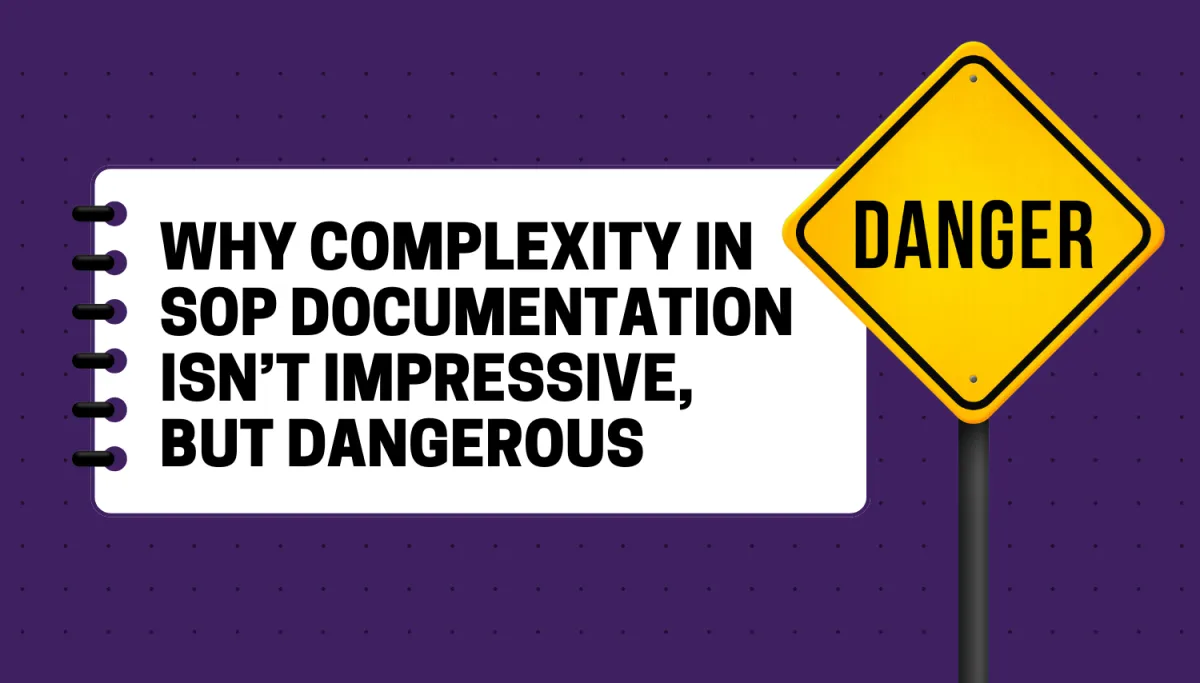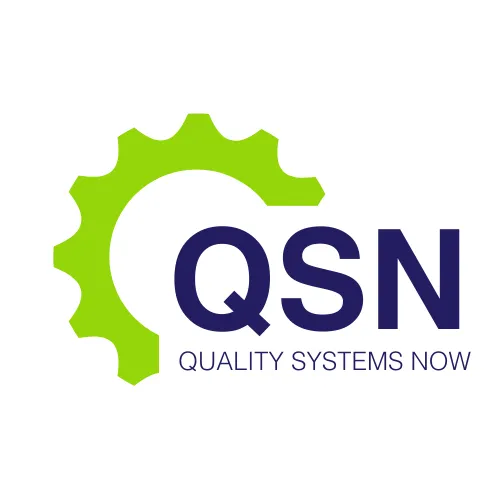LATEST NEWS

Why Complexity in SOP Documentation Isn’t Impressive But Dangerous
Standard Operating Procedures (SOPs) are indispensable. They serve as the blueprint for how tasks should be performed, ensuring consistency, efficiency, and adherence to regulatory standards. However, there’s a common misconception that complex, highly detailed SOPs are a sign of sophistication and thoroughness. In reality, complexity in SOP documentation is not impressive—it’s dangerous. Overly complicated SOPs can lead to confusion, errors, and non-compliance, ultimately undermining the very purpose they are meant to serve.
Quality Systems Now helps organisations to achieve better outcomes. Talk to Us today.
Check our latest Available Public Training Sessions.
The Illusion of Sophistication
At first glance, a lengthy, jargon-filled SOP might seem impressive. It may give the impression that the organization has left no stone unturned in detailing its processes. However, this perception is misleading. Complexity does not equate to effectiveness. In fact, it often has the opposite effect. When SOPs are difficult to understand, employees are more likely to misinterpret instructions, skip critical steps, or avoid using the document altogether. This defeats the purpose of having SOPs in the first place.
The goal of an SOP is to provide clear, actionable guidance. If the document is so complex that it requires extensive training or frequent clarification, it fails to fulfill its primary function. Simplicity, not complexity, is the hallmark of a well-written SOP.
The Risks of Complex SOPs
Complexity in SOP documentation poses several risks to an organization, including:
1. Increased Risk of Errors
When SOPs are difficult to understand, employees are more likely to make mistakes. Misinterpretation of instructions can lead to incorrect procedures, flawed outcomes, and even safety hazards. In industries such as healthcare, pharmaceuticals, or manufacturing, such errors can have severe consequences, including harm to patients, product recalls, or regulatory penalties.
2. Reduced Compliance
Compliance is a key reason for having SOPs. However, if employees cannot understand or follow the procedures, compliance becomes impossible. Regulatory bodies require that SOPs be followed consistently and accurately. Complex documentation increases the likelihood of non-compliance, putting the organization at risk of fines, sanctions, or legal action.
3. Lower Productivity
Complex SOPs can slow down operations. Employees may spend excessive time trying to decipher instructions or seeking clarification, leading to delays and inefficiencies. This not only affects productivity but also frustrates employees, reducing morale and engagement.
4. Poor Adoption Rates
If SOPs are too complicated, employees may avoid using them altogether. Instead, they may rely on memory, informal practices, or shortcuts, which can lead to inconsistent and non-compliant outcomes. Poor adoption rates undermine the effectiveness of SOPs and create gaps in quality control.
5. Increased Training Costs
Complex SOPs require more extensive training to ensure employees understand them. This increases the time and cost associated with onboarding new hires or retraining existing staff. It also places a greater burden on trainers, who must break down complicated documents into digestible information.
Why Simplicity is Key
The best SOPs are those that are simple, clear, and easy to follow. Simplicity does not mean omitting important details—it means presenting information in a way that is accessible and actionable. Here’s why simplicity is crucial:
Improved Understanding: Simple SOPs are easier to read and understand, reducing the risk of misinterpretation.
Enhanced Compliance: Clear instructions make it easier for employees to follow procedures consistently, ensuring compliance with regulatory standards.
Increased Efficiency: Straightforward SOPs save time and reduce the likelihood of errors, boosting productivity.
Better Adoption Rates: Employees are more likely to use SOPs that are easy to follow, leading to consistent and compliant practices.
Lower Training Costs: Simple SOPs require less training, reducing the time and resources needed to onboard new employees.
How to Simplify Your SOPs
Simplifying your SOPs doesn’t mean sacrificing detail or accuracy. It’s about presenting information in a way that is clear, concise, and user-friendly. Here are some strategies to achieve this:
1. Use Plain Language
Avoid jargon, technical terms, and overly complex language. Write in a way that is accessible to all employees, regardless of their expertise. If technical terms are necessary, provide definitions or a glossary.
2. Adopt a Logical Structure
Organize your SOPs in a clear, logical manner. Use headings, subheadings, and bullet points to break up text and make the document easy to navigate. Numbered steps are particularly useful for procedural instructions.
3. Focus on the Essentials
Include only the information that is necessary for performing the task. Avoid unnecessary details or lengthy explanations that can overwhelm the reader. If additional information is needed, consider including it in an appendix or supplementary document.
4. Use Visual Aids
Incorporate diagrams, flowcharts, and images to complement written instructions. Visual aids can help clarify complex processes and make SOPs more engaging and easier to understand.
5. Keep It Concise
Aim for brevity without sacrificing clarity. Use short sentences and paragraphs to make the document easier to read. If an SOP becomes too long, consider breaking it into smaller, more focused documents.
6. Test Your SOPs
Before finalizing an SOP, test it with a small group of employees to ensure it’s clear and easy to follow. Observe how they use the document and ask for their feedback. Make adjustments as needed to address any confusion or gaps.
7. Regularly Review and Update
SOPs should be living documents that evolve with your organization. Regularly review and update them to reflect changes in processes, technology, or regulations. Remove outdated or redundant information to keep the document relevant and concise.
8. Provide Training and Support
Even simple SOPs may require some explanation. Provide training sessions to walk your team through new or updated SOPs. Use real-life examples and hands-on exercises to reinforce understanding.
The Role of Technology in Simplifying SOPs
Technology can play a significant role in simplifying SOP documentation. Document management systems (DMS) and workflow automation tools can help streamline the creation, distribution, and updating of SOPs. These tools often include features such as version control, search functionality, and user permissions, making it easier for employees to find and follow the most up-to-date procedures.
Additionally, interactive digital SOPs can enhance understanding by incorporating multimedia elements, such as videos or clickable diagrams. These features can make complex processes more intuitive and engaging for employees.
Conclusion
Complexity in SOP documentation is not a badge of honor—it’s a liability. Overly complicated SOPs can lead to errors, non-compliance, and inefficiencies, putting your organization at risk. By prioritizing simplicity and clarity, you can create SOPs that are easy to understand, follow, and implement.
At Quality Systems Now, we specialize in helping organizations streamline their SOP documentation and improve compliance. Our team of experts can assist you in developing clear, concise, and effective SOPs that meet the needs of your organization and your team. Don’t let complexity stand in the way of success—simplify your SOPs and empower your team to achieve excellence.
